Famous Festivals in Nigeria - Culture
A festival is an event ordinarily celebrated by a community and centering on some characteristic aspect of that community and its religion or traditions. It is often marked as a local or national holiday, mela, or eid. Next to religion and folklore, a significant origin is agricultural. Food is such a vital resource that many festivals are associated with harvest time.
Festivals that celebrate tradition and display history are common to peoples and cultures all over the world. In Nigeria, the many and varied festivals are usually colourful avenues through which the cultural heritage of the people is showcased and celebrated. Artistic presentations, singing and dancing and so on characterise these festivals and each of the diverse cultures in Nigeria has one or the other that has refused to lose relevance, in spite of the influences of modernisation and Western religions.
8 FAMOUS FESTIVAL IN NIGERIA
(1)ARGUNGU FESTIVAL
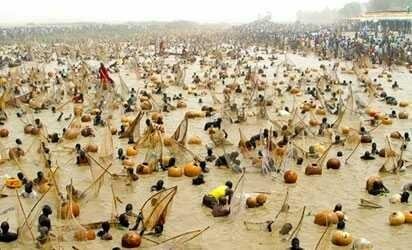
The Argungu Fishing Festival is an annual four-day festival in the state of Kebbi, in the north-western part of Northern Nigeria. ... People from around the world travel to Argungu just to witness the occasion.The main purpose of the Argungu fishing festival is for fishing and unity.
On the final day of the festival, a competition is held in which thousands of men line up along the river and at the sound of a gunshot, all of them jump into the river and have an hour to catch the largest fish. The winner can take home as much as $7,500 US dollars. Competitors are only allowed to use traditional fishing tools and many prefer to catch fish entirely by hand (a practice also popular elsewhere and known as " noodling ") to demonstrate their prowess.
The Argungu Fishing Festival attracts spectators from near and far.
(2)SHARO/SHADI FESTIVAL
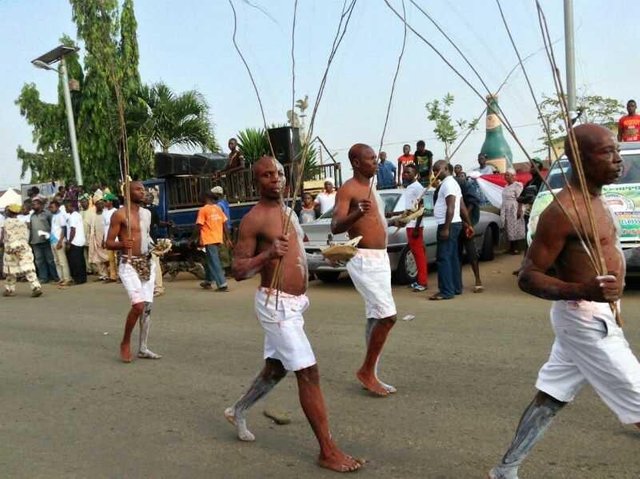
Most indigenous cultures include the rites of passage from boys to men. Though, it varies from one community to the other, the common features are the fortification rites, sacrifice, hunting challenge and test of bravery and strength.
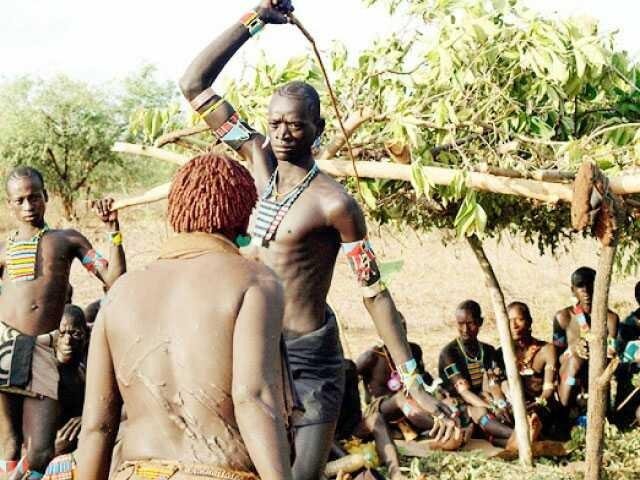
The Sharo cultural festival demonstrates the test of endurance and bravery in a most dramatic way The institution of vital importance to the nomadic Fulani, and all kinds of customs and ceremonies has arisen around it. One such ceremony is the sharo, a public flogging that is a test of manhood. Not all Fulani nomadic groups observe this ceremony or insist on it before a young man may marry. For some it is merrily a sport, indulged in for its own sake. Probably the keenest exponents of the sharo are the Jafun Fulani found in Nigeria. The sharo/shadi is a test of endurance; a youth is expected to undergo severe flogging in public without flinching. It is normally staged twice a year, during the dry-season guinea corn harvest and the Muslim festival of Id-el-kabir.
(3)NEW YAM FESTIVAL
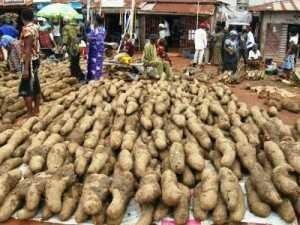
The New Yam Festival of the Igbo people ( Orureshi in the idoma area, Iwa ji , Iri ji or Ike ji , depending on dialect) is an annual cultural festival by the Igbo people held at the end of the rainy season in early August.
The Iwa ji festival (literally " new-yam eating ") is practiced throughout West Africa (especially in Nigeria and Ghana )and other African countries and beyond, symbolizing the conclusion of a harvest and the beginning of the next work cycle. The celebration is a very culturally based occasion, tying individual Igbo communities together as essentially agrarian and dependent on yam.
The festival also celebrates the abundance of food that replaces the scarcity usually experienced between planting season and harvest time. This festival is, therefore, a popular celebration among the Igbos, who are predominantly farmers and eat yam a lot. It attracts prominent Igbo sons and daughters from all over the world, as well as guests who grace the occasion.
On the eve of the festival, all old yams from the previous year’s harvest are either discarded or eaten to give way for new ones. Then, on the day of the festival, only yam dishes are served in the homes. Some renowned farmers use the occasion to invite friends and relations, especially the less privileged, to celebrate with them.
Making presentations of special offerings, the traditional ruler or the oldest man in each community is required to offer yam (cooked or roasted), usually mixed with palm oil, to the recognised deities of the land and to the ancestors. After the sacrifice with its rituals, members of the community are free to start eating their already prepared dishes of yam.
(4)ONITSHA IVORY FESTIVAL
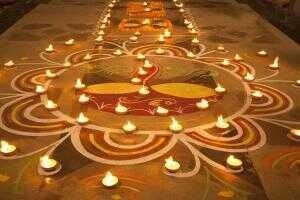
Among the Igbos, the Onitsha Ivory Festival is one of the most famous. Ivory – the substance elephant tusks are made of – is regarded as a very expensive item for the traditional institution in Igbo land. It is, therefore, usually worn by a select category of women who can afford it.
it is the women who indulge in weird activities , wives of wealthy men are seen collecting ivory and coral that would be used to design their own costumes. Any woman who has been able to acquired plenty coral and ivory to decorate her ivory costume will be given the prestigious title ‘ Ozo ’ – An Ivory holder. To be qualified , the participant is expected to have two large pieces of ivory, which weigh 25 kilos each.
(5)CALABAR FESTIVAL AND CALABAR CARNIVAL
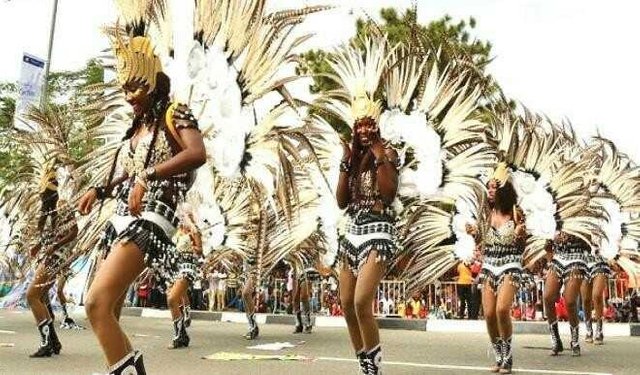
Calabar Carnival festival in Nigeria, also tagged " Africa's Biggest Street Party", was created as part of the vision of making the Cross River State , Nigeria , the number one tourist destination for Nigerians and tourists all over the world. The carnival which begins every 1st December and last till 31st December has boosted the cultural mosaic of Nigeria people while entertaining millions of spectators within and outside the State, and boosting industry for all stakeholders.
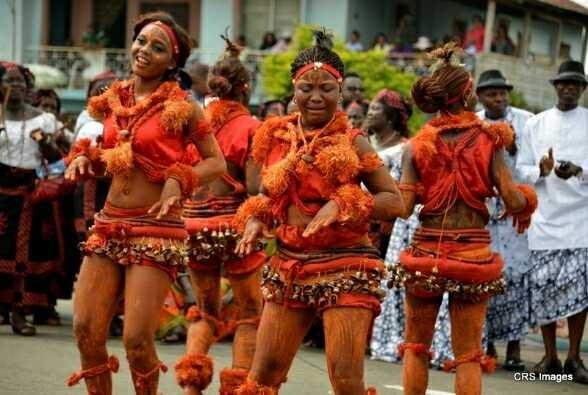
The Calabar Carnival is a very spectacular event, with dancers in colourful costumes and long, feathered headdresses dancing along the major streets in the state capital, as sonorous music fills the air. The street parades showcase up to 50, 000 young people, twisting their supple bodies into admirable spectacles. The occasion attracts no less than two million people from different parts of the country and beyond to Calabar every year.
(6)EYO FESTIVAL
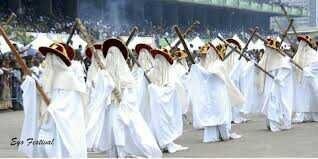
The word "Eyo" also refers to the costumed dancers, known as the masquerades that come out during the festival. The origins of this observance are found in the inner workings of the secret societies of Lagos.
Back in the days, The Eyo festival is held to escort the soul of a departed Lagos King or Chief and to usher in a new king. It is widely believed that the play is one of the manifestations of the customary African revelry that serves as the forerunner of the modern carnival in Brazil . On Eyo Day, the main highway in the heart of the city (from the end of Carter Bridge to Tinubu Square) is closed to traffic, allowing for procession from Idumota to the Iga Idunganran palace. The white-clad Eyo masquerades represent the spirits of the dead, and are referred to in Yoruba as "agogoro Eyo" (literally: "tall Eyo").
(7)OSUN/OSOGBO FESTIVAL
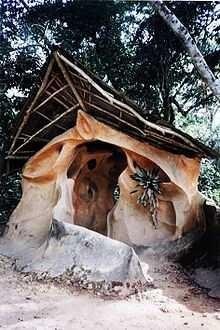
Osun-Osogbo or Osun-Osogbo Sacred Grove is a sacred forest along the banks of the Osun river just outside the city of Osogbo , Osun State , Nigeria .
Among the cultural festivals highly regarded in Nigeria and the South West region in particular is the Osun/Osogbo Festival, which usually takes place in July and August of each year. The festival takes place in the Sacred Forest of Osun and lasts for a week. It is used as an occasion to reverence and honour the river goddess, Oshun of Osun State.
The people of Osun believe firmly in this goddess and therefore, thousands converge to attend the event annually. Some people come in from other parts of Africa and beyond, as it attracts Osun people in the Diaspora. The devotees believe in the potency of the goddess to hear their requests and provide solutions to their problems.
(8)SANGO FESTIVAL
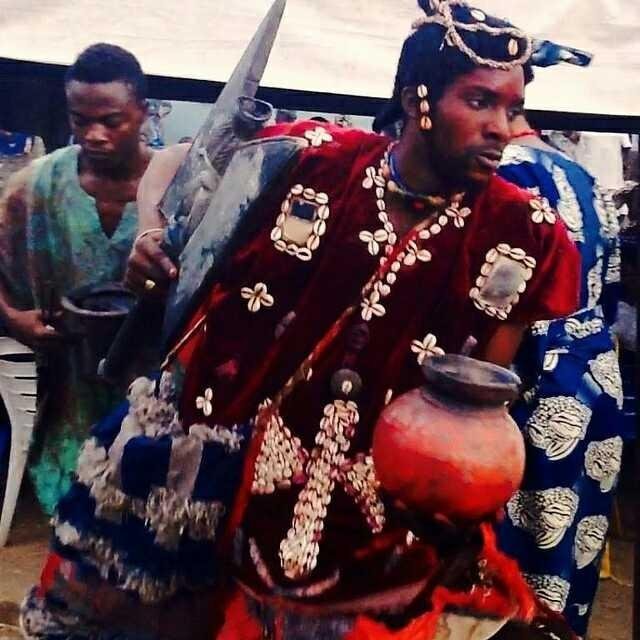
Sango Festival is an annual festival held among the Yoruba people in honour of Sango , a thunder and fire deity who was a warrior and the third king of the Oyo Empire after succeeding Ajaka his elder brother. Renamed in 2013 to World Sango Festival by the government of Oyo State , the festival is usually held in August at the palace of the Alaafin of Oyo and also observed in over forty countries around the world.
According to oral history, Sango was said to be so powerful that he amassed a formidable empire in Africa and transported Oyo culture beyond the Oyo Empire. He was a strong warrior, regarded during his time as a symbol of power and truth. He was the supreme judge in Oyo Empire and the final court
an interesting festival, which is served with artistic performances is very interesting
Thanks
This post has received a 0.31 % upvote from @drotto thanks to: @banjo.
Congratulations! This post has been upvoted from the communal account, @minnowsupport, by wokejijasper from the Minnow Support Project. It's a witness project run by aggroed, ausbitbank, teamsteem, theprophet0, someguy123, neoxian, followbtcnews, and netuoso. The goal is to help Steemit grow by supporting Minnows. Please find us at the Peace, Abundance, and Liberty Network (PALnet) Discord Channel. It's a completely public and open space to all members of the Steemit community who voluntarily choose to be there.
If you would like to delegate to the Minnow Support Project you can do so by clicking on the following links: 50SP, 100SP, 250SP, 500SP, 1000SP, 5000SP.
Be sure to leave at least 50SP undelegated on your account.